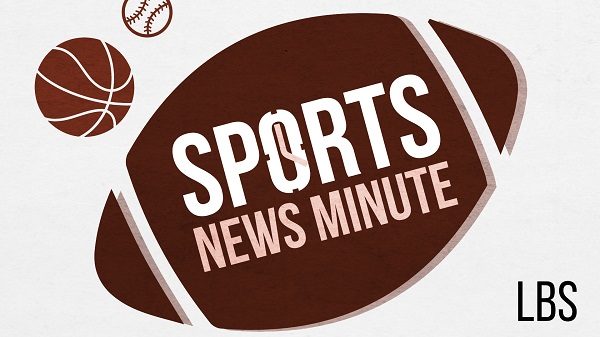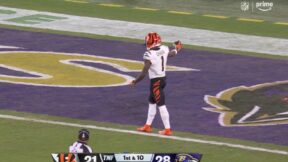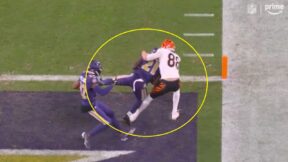10 rookie running backs who could have a major role

10. Nick Chubb, Cleveland Browns
Chubb looked like the next great thing when he ran behind Todd Gurley and racked up nearly 1,800 yards from scrimmage as a freshman in 2014. He then suffered a knee injury in 2015 that slowed him down a bit over two seasons, but the former Georgia star capped off his college career with 1,345 rushing yards and 15 touchdowns in 2018. If the Browns didn’t sign Carlos Hyde to a three-year deal this offseason, Chubb would be way higher on this list. He could get lost in the shuffle behind Hyde and Duke Johnson, or he could impress Cleveland’s coaching staff enough to carve out a major role. Neither scenario would be a shock.
9. Bo Scarbrough, Dallas Cowboys
It may seem crazy to think any player sharing a backfield with Ezekiel Elliott could make a big impact, but the Cowboys should be more run-heavy than ever this year with Dez Bryant gone and their receiving corps lacking explosive playmakers. Scarbrough’s running style is very similar to Elliott’s, which means the former Alabama star could spell Zeke at any time. While Scarbrough never rushed for more than 812 yards in a season with the Crimson Tide, he scored 19 touchdowns over the past two years and was the go-to guy when Nick Saban wanted to ice a game. Don’t be surprised if he vultures a bunch of touchdowns away from Elliott and frustrates Zeke’s fantasy owners.
8. Nyheim Hines, Indianapolis Colts
The Colts drafted Hines in the fourth round and then took Ole Miss running back Jordan Wilkins not long after that, and both could end up competing for snaps behind Marlon Mack. With Frank Gore out of the picture, Mack is basically the veteran of Indy’s backfield group despite only entering his second season. If he seizes control of the starting job, Hines seems like the best bet to be the big-play complement. The former NC State star averaged 5.6 yards per carry in 2017 and scored 12 touchdowns. His 40-yard dash time of 4.38 seconds was the fastest for a running back at the Scouting Combine, so the home run potential is certainly there.
7. Kerryon Johnson, Detroit Lions
Johnson looked like the best running back in the country at times with Auburn last season, but he was slowed a bit by a knee injury down the stretch. Still, he seems healthy and his combination of size and speed are obviously what made him attractive to the Lions. Detroit has a crowded backfield that includes Ameer Abdullah, Theo Riddick and now LeGarrette Blount, but Blount is getting toward the end of his career and both Abdullah and Riddick are better served as pass-catching backs who can rip off big plays. If Johnson has a good camp, he may be the best bet for early-down work in Detroit.
6. Ronald Jones II, Tampa Bay Buccaneers
Jones isn’t the best back in the incoming rookie class, but he has very little competition in Tampa Bay. Doug Martin has moved on to the Oakland Raiders, and it’s doubtful that Jacquizz Rodgers or Charles Sims are going to become feature backs in their eighth and fifth NFL seasons, respectively. Jones, who rushed for 1,550 yards and a whopping 19 touchdowns at USC last year, lacks explosive speed but should have no problem earning early-down work with the Bucs.
5. Royce Freeman, Denver Broncos
The Broncos said goodbye to C.J. Anderson this offseason and spent a third-round pick on Freeman, so it’s probably safe to assume they have high hopes for the former Oregon star. Freeman was a four-year starter with the Ducks and is the school’s all-time leader in rushing yards (5,521) and rushing touchdowns (60) as well as a few other categories. He’ll likely split carries with third-year back Devontae Booker, but Booker has had plenty of chances to take control of Denver’s backfield in his first two seasons. With Case Keenum now under center, the Broncos’ offense should be much better overall. Freeman should help the unit get back on track.
4. Rashaad Penny, Seattle Seahawks
The biggest concern for Penny in Seattle will be the offensive line, as we have all seen how big of an issue it has been for the Seahawks in recent seasons. If the Seahawks can’t open up holes and find a way to establish the running game that made them so successful a few years back, it won’t matter that they drafted a running back in the first round who led the nation in 2017 with 2,248 yards. But if new offensive coordinator Brian Schottenheimer can figure things out, he has a shiny new toy that averaged 7.7 yards per carry at San Diego State over the past two seasons. Penny’s combination of size and speed have the potential to make him the best rookie running back not named Saquon Barkley.
3. Sony Michel, New England Patriots
The Patriots have very rarely taken running backs early in the draft under Bill Belichick, which is precisely what makes the Michel pick so noteworthy. It’s no coincidence that Belichick drafted Michel and let Dion Lewis walk in the same offseason, and all signs point to the former Georgia star having a significant role in 2018. Michel shared carries last season with Nick Chubb, but he rushed for a whopping 7.9 yards per carry and showed flashes of great receiving ability. New England doesn’t use a featured running back, but Lewis was their most important ball carrier last season. Michael has an opportunity to fill that role immediately.
2. Derrius Guice, Washington Redskins
Guice’s tumble down the draft board left many people scratching their heads, as the former LSU star was widely considered a first-round talent. Six running backs were taken ahead of him due to concerns over his character, but that does not mean six rookie running backs are more talented than Guice. After he battled a knee injury and still rushed for 1,251 yards and 11 touchdowns in 2017, Guice should have no problem beating out Rob Kelley and Samaje Perine as Washington’s early-down back if he’s healthy and focused. Assuming the off-field concerns don’t amount to much, Guice could be a steal at No. 59 overall.
1. Saquon Barkley, New York Giants
What can we say about Barkley that hasn’t already been said? He spent his career at Penn State making defenders look bad, and he’s a rare non-quarterback prospect in that he has the potential to change the entire landscape of a team’s offense. Barkley can run through or around defenders, catch passes out of the backfield or line up as a wide receiver. The Giants had a dreadful offensive line in 2017, but they tried to address that area by signing Nate Solder to a massive contract in free agency. The sky is truly the limit for Barkley.







